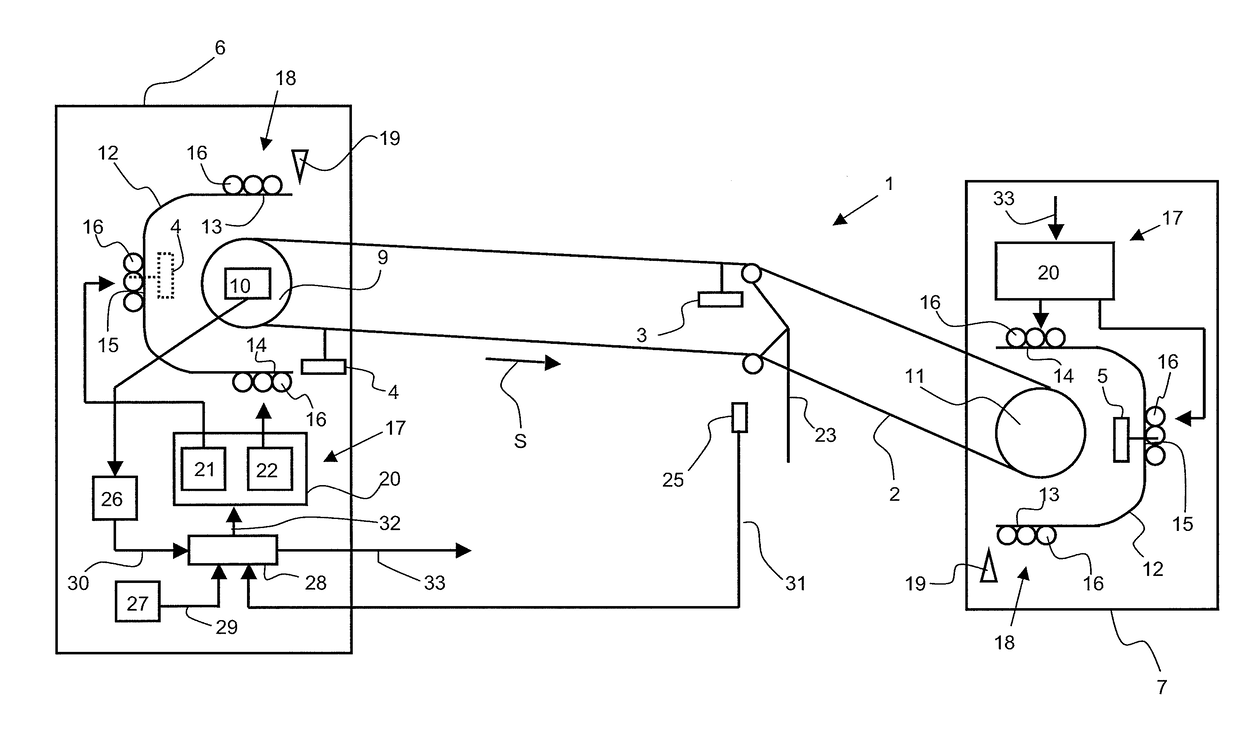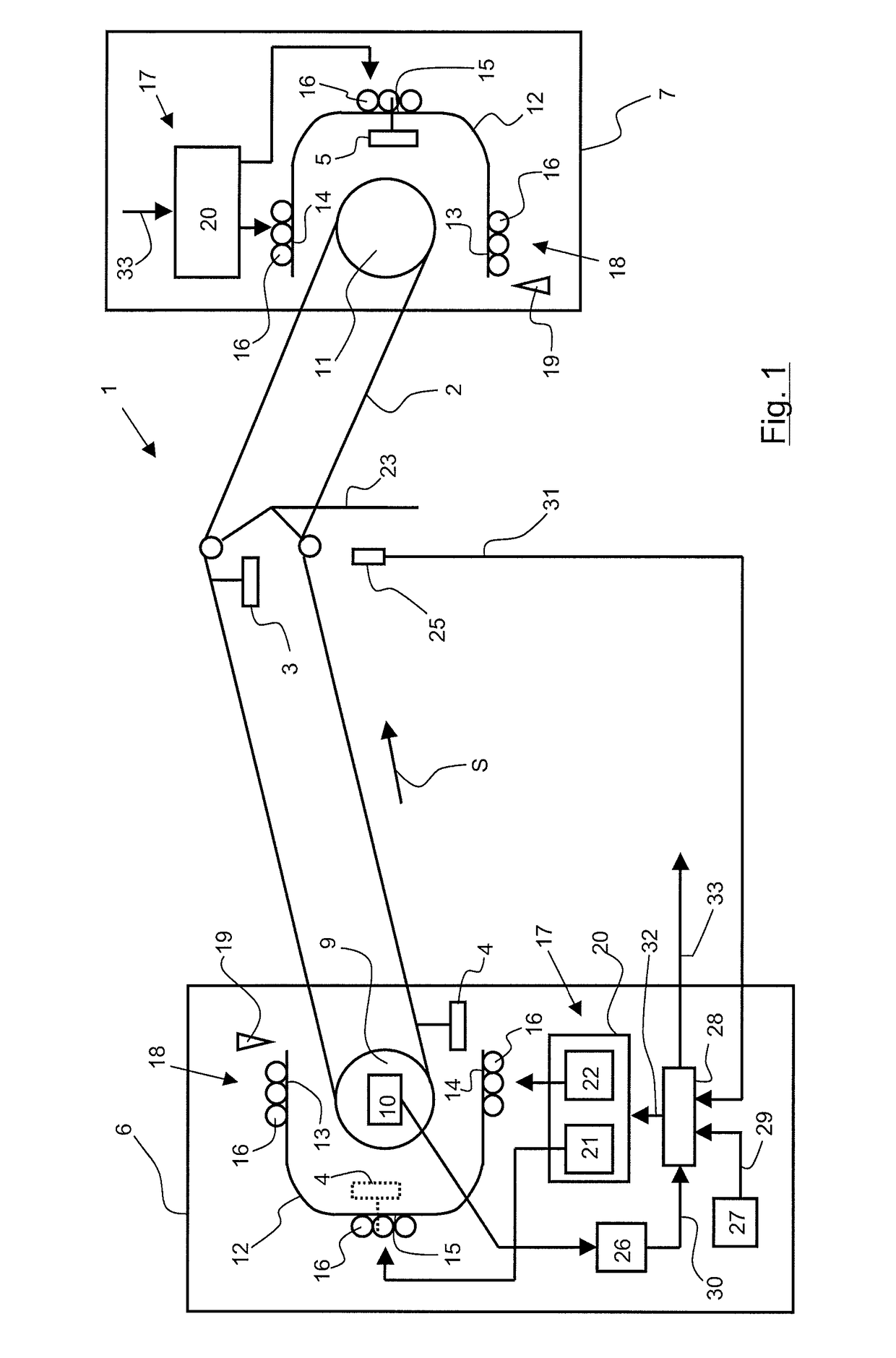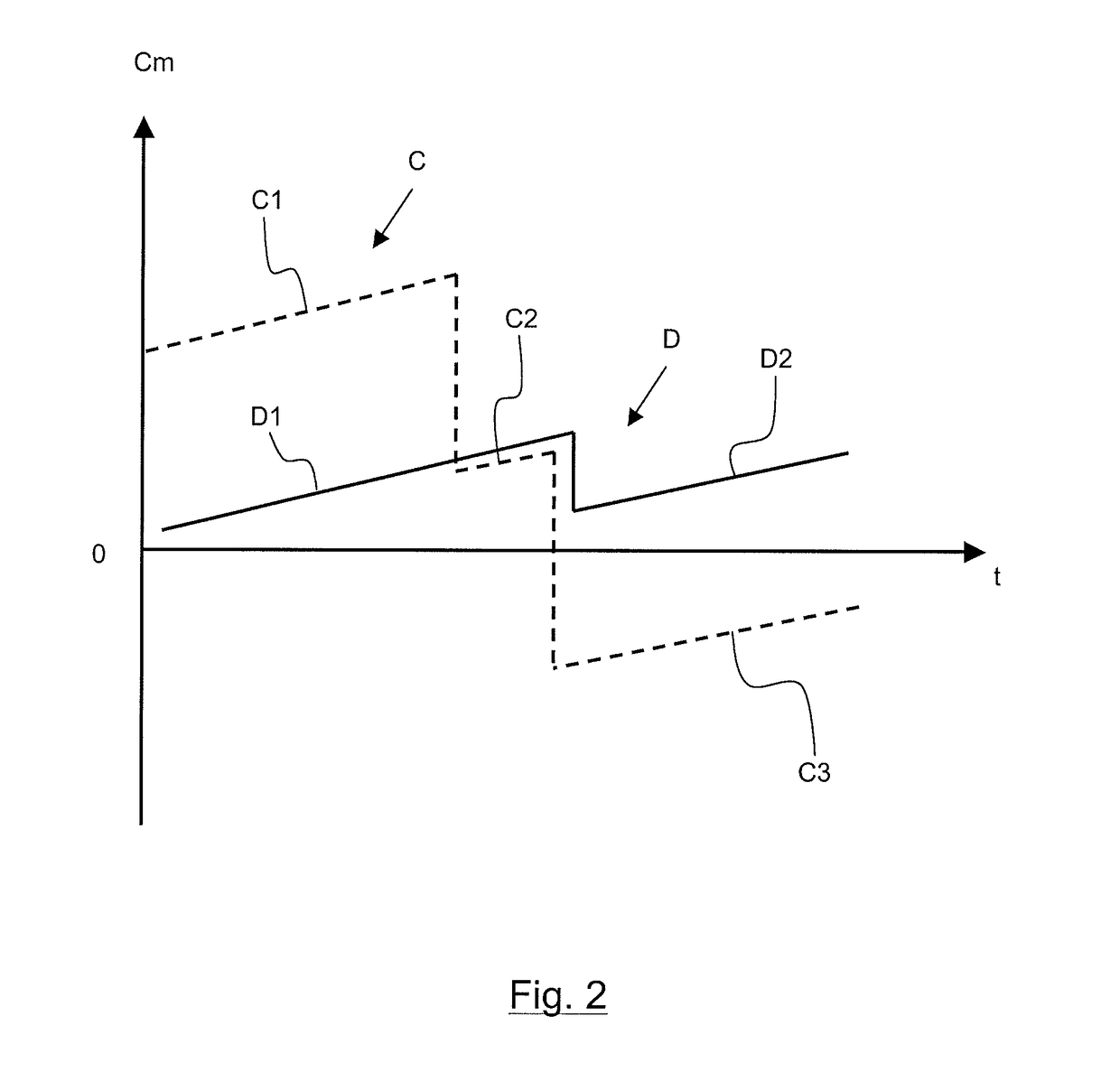Aerial cableway transport installation and method
a technology of aerial cableway and installation method, which is applied in the directions of transportation and packaging, transportation of rope railways, sustainable transportation, etc., can solve the problems of passengers' discomfort, and achieve the effect of improving the comfort of passengers of the vehicles
- Summary
- Abstract
- Description
- Claims
- Application Information
AI Technical Summary
Benefits of technology
Problems solved by technology
Method used
Image
Examples
Embodiment Construction
[0040]In FIG. 1, a transport installation 1 by aerial cableway 2 comprising at least two vehicles 3 to 5 has been represented. In the example illustrated in FIG. 1, the installation comprises three vehicles 3 to 5. Vehicles 3 to 5 are configured to be coupled to the rope 2 and hauled by the latter. The transport installation 1 is in general manner a cable car. More particularly, the installation 1 can be a cabin lift and in this case the vehicles are closed, or it can be a chair lift where the vehicles are open. The installation 1 comprises at least two terminal stations, called terminals 6, 7, for loading and unloading of people. In the examples illustrated in FIGS. 1 and 5, the installation 1 comprises two terminals 6, 7 situated at the same level, i.e. on the same horizontal line. As a variant, a first terminal 6 is located uphill and is called uphill terminal, and a second terminal 7 is located downhill and is called downhill terminal, as illustrated in FIGS. 3 and 4. The transp...
PUM
 Login to View More
Login to View More Abstract
Description
Claims
Application Information
 Login to View More
Login to View More - R&D
- Intellectual Property
- Life Sciences
- Materials
- Tech Scout
- Unparalleled Data Quality
- Higher Quality Content
- 60% Fewer Hallucinations
Browse by: Latest US Patents, China's latest patents, Technical Efficacy Thesaurus, Application Domain, Technology Topic, Popular Technical Reports.
© 2025 PatSnap. All rights reserved.Legal|Privacy policy|Modern Slavery Act Transparency Statement|Sitemap|About US| Contact US: help@patsnap.com



